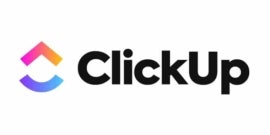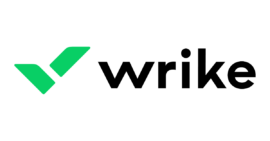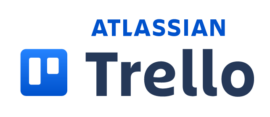Scrum is one of the most popular agile methodologies, so many teams naturally want a project management software that has features to support a Scrum approach. In this software guide, we’ve rounded up eight of the best product management platforms that can be used by Scrum teams. We compare their pricing, features and more to help you decide which Scrum project management software is the best for your team.
Jump to:
Top Scrum project management software comparison
Besides affordable pricing, you want to make sure that your project management software has certain key features. Here are some of the features to look out for when comparing Scrum project management software:
| Native time tracking | Multiple view types | Templates | forever-free plan | Pricing | |
|---|---|---|---|---|---|
| monday.com | Yes | Yes | Yes | Yes | $8 per person per month |
| Jira | Yes | Yes | Yes | Yes | $7.75 per person per month |
| ClickUp | Yes | Yes | Yes | Yes | $5 per person per month |
| Wrike | Yes | Yes | Yes | Yes | $9.80 per person per month |
| Lucidspark | No | No | Yes | Yes | $7.95 per person per month |
| Basecamp | No | Yes | Yes | No | $15 per person per month |
| Trello | Yes | Yes | Yes | Yes | $5 per person per month |
| Asana | No | Yes | Yes | Yes | $10.99 per person per month |
Jira: Best for software development teams

Owned by Atlassian, Jira remains one of the best project management solutions for IT teams on the market today. Its issue tracking features makes it easy to log bugs and assign them to members of your team. It offers multiple project views and templates to support agile methodologies, including Scrum. Jira also integrates with over 500 other tools and offers more than 3,000 extensions, so you can take the platform’s functionality to the next level.
Pricing
- Free: $0 for up to 10 users.
- Standard: $7.75 per user billed monthly.
- Premium: $15.25 per user billed monthly.
- Enterprise: Contact the sales team for a custom quote.
Features
- Robust scrums board with agile-specific features.
- Unique roadmap feature displays a bird’s-eye view of projects.
- Enterprise-grade security solutions.
- Seamless syncing with other Atlassian products.
Pros
- Great reporting and analytics capabilities.
- More than 3,000 extensions.
- Very customizable.
- IT-specific features such as issue tracking.
Cons
- Can be complex for new users to learn.
- Customization can be time consuming to set up.
- Free trial is only seven days long.
- Could use more collaboration features and project views.
For more information, read the full Jira review.
SEE: The 9 best agile project management software for 2023
ClickUp: Best for teams on a budget

While a relative newcomer to the project management space — it only launched in 2017 — ClickUp has quickly made a name for itself thanks to its combination of affordable prices and excellent project management features. With paid plans starting at only $5 per person (billed annually) this is a great choice for Scrum teams of all sizes who want the most popular project management tools without breaking the bank.
Pricing
- Free Forever: $0; best for personal use.
- Unlimited: $5 per user per month billed annually, or $9 per user per month billed monthly.
- Business: $12 per user per month billed annually, or $19 per user per month billed monthly.
- Business Plus: $19 per user per month billed annually, or $29 per user per month billed monthly.
- Enterprise: Contact the sales team for a custom quote.
Features
- More than 15 project views.
- More than 1,000 integrations.
- Built-in team chat messaging tool.
- 24/7 customer support for all plans.
Pros
- Free plan offers a high level of functionality.
- Can manage complex projects.
- Excellent values for the money.
- User-friendly interface.
Cons
- Free plan has 100MB of limited storage.
- Some users report occasional performance issues and lags.
- Can present a learning curve due to the number of features.
For more information, read the full ClickUp review.
Wrike: Best for power users

Wrike is one of the most full-featured project management solutions on the market. While it can be overwhelming for small teams, Wrike is an excellent choice for power users who are looking to manage a portfolio of complicated Scrum projects and want more niche functions such as risk predictions. Those willing to master the advanced learning curve will find it a powerful solution with a high degree of customizability.
Pricing
A free trial is available for each of the following plans:
- Free: $0 per user per month.
- Team: $9.80 per user per month.
- Business: $24.80 per user per month.
- Enterprise: Contact the sales team for a custom quote.
- Pinnacle: Contact the sales team for a custom quote.
Features
- Custom request forms.
- Risk predictions.
- Invoicing software.
- File and video proofing.
Pros
- Great for project portfolio management.
- Organized interface is well laid out.
- Premium security and data privacy features.
- Two-way sync with 12 other apps available as paid add-ons.
Cons
- Team plan supports only 25 users.
- Must upgrade to Business plan for time tracking and template creation.
- Advanced plans are more expensive than competitors.
- Learning curve is very high compared to alternatives.
For more information, read the full Wrike review.
Lucidspark: Best for brainstorming

Whiteboards are a key element of Scrum project management and agile methodologies, but they’ve been difficult to replicate in a digital space — until Lucidspark. This virtual whiteboard replicates the experience of posting sticky notes and freehanding drawings on a board in a physical meeting. Because it’s designed specifically for brainstorming and ideating, Lucidspark will work best when used in conjunction with a dedicated project management solution such as the other products listed in this article.
Pricing
- Free: $0 for up to 3 boards; best for personal use.
- Individual: $7.95 per person per month.
- Team: $9 per person per month.
- Enterprise: Contact the sales team for a custom quote.
A free trial is available.
Features
- Add virtual sticky notes to the board.
- Free hand drawings and connections as if you were using a marker.
- Collaborate with teammates in the chat.
- Sort sticky notes by category to create a clear plan of action.
Pros
- Captures the experience of using a whiteboard.
- Unique visual collaboration tool that isn’t replicated by competitors.
- Agile-specific templates available.
Cons
- Not a standalone project management solution.
- Free plan not suitable for business teams.
- Must upgrade to Team plan to get revision history and chat features.
SEE: 6 best mind mapping software for project management in 2023
Basecamp: Best for small teams

Basecamp is a project management solution that was designed with freelancers, startups and other small teams in mind. It offers a unique flat rate pricing option that will appeal to many businesses looking to standardize their project management budget. Basecamp has a friendly, simple interface that will appeal to teams looking to get started with Scrum project management.
Pricing
- Free: Only available for teachers and students, not businesses.
- Basecamp: $15 per user per month.
- Basecamp Pro Unlimited: $299 per month, billed annually.
Features
- Hill Charts offers a unique project visualization.
- Card Table offers a new take on Kanban boards.
- Many communication tools such as message boards that are great for remote teams.
- Documents and file storage.
Pros
- Has both per-user and flat-rate plan options.
- Free for invited guests.
- User-friendly interface.
- Free for students and teachers.
Cons
- No forever-free business plan.
- May be more expensive than competitors, depending on how many users you need.
- No native time-tracking abilities.
- Need third-party integration for Gantt charts.
For more information, read the full Basecamp review.
Trello: Best for beginners

Purchased by Atlassian in 2017, Trello originally gained traction for its intuitive Kanban boards but has since developed into a full-fledged project management tool. Its simple, visual approach makes it a good choice for people who are new to Scrum and/or project management. Its free plan supports unlimited users, so the whole team can try it out before you decide if you want to upgrade to a paid plan.
Pricing
- Free: Up to 10 boards per workspace.
- Standard: $5 per user per month if billed annually, or $6 per user per month if billed monthly.
- Premium: $10 per user per month if billed annually, or $12.50 per user per month if billed monthly.
- Enterprise: $17.50 per user per month when billed annually.
Features
- Built-in automation tool called Butler.
- Highly visual user interface.
- Easy-to-use mobile app.
- Intuitive Kanban boards.
Pros
- Unlimited users on the forever-free plan.
- Intuitive Kanban boards.
- Seamless syncing with other Atlassian products.
- Good selection of native integrations.
- Completely transparent pricing plans.
Cons
- Free plan is limited to only 10 boards or projects.
- Project management features aren’t as robust as some competitors.
- Limited customization options.
- Reporting tools could be improved.
For more information, read the full Trello review.
Asana: Best for simple Scrum projects

Asana is another project and task management tool that is a good choice for Scrum beginners. Asana is best suited for simple and straightforward Scrum projects that don’t require very complex project management. This is because the platform lacks certain features, such as native time tracking and complex dependencies, that more robust alternatives have.
Pricing
- Basic: $0 per user per month for up to 15 people.
- Premium: $10.99 per user per month billed annually, or $13.49 per user per month billed monthly.
- Business: $24.99 per user per month billed annually, or $30.49 per user per month billed monthly.
- Enterprise: Contact the sales team for a custom quote.
Features
- Multiple project views available.
- Workflow builder helps standardize task execution.
- Advanced reporting and analytics.
- Many data import options.
Pros
- Great task-management features.
- Free plan allows unlimited projects and tasks.
- Integrates well with third-party tools.
- Offers support for agile and Scrum projects.
Cons
- No native time tracking.
- User interface could be more intuitive.
- Advanced security features only available with the Enterprise plan.
- Not suitable for projects with complex dependencies.
For more information, read the full Asana review.
Key features of Scrum project management software
Scrum-specific templates
Most project management platforms offer prebuilt templates to make it easier and faster to create a new project. However, not all of them offer a wide range of templates that are specific to agile and Scrum methodologies. Check each platform to see if it offers templates that will be useful for your specific project management methodology.
Customizable workflows
Scrum methodology involves very specific workflows, and these should be reflected in whatever project management software you choose. The workflows should also be customizable to fit the individual needs and timelines of your team, especially if you’re managing complex projects over a long period of time.
Team collaboration tools
Switching to email, Slack or Team every time your team needs to discuss a task wastes time and splits the conversation across multiple platforms. The best project management software keeps everything in one platform with collaboration tools such as comments, notifications and messaging.
Automation
Automation helps teams reduce repetitive, manual tasks so they can focus on getting more valuable work done. Automation rules can do things such as assigning all tasks in a certain section to one person or setting up a workflow when a new task is added to a project. Each platform approaches automation in a slightly different way, so make sure your top choices use automation in a way that works for your team.
Integrations
Most project management platforms offer some integration, but this can vary widely from a couple dozen apps to hundreds of other software solutions. It’s always a good idea to check each app in your software stack to make sure that your chosen project management system will integrate with all of them. Otherwise, you’ll have to use an outside solution such as Zapier or build a custom integration using an open API.
How do I choose the best Scrum project management software for my business?
Before you select a new Scrum project management software, consider your current project management solutions and how they succeed or fall short of your requirements. Once you identify the shortcomings, you can look for a new project management solution that solves them.
Take advantage of free trials and forever-free accounts so that you can test drive the software for yourself. Most of the platforms listed in this guide offer both of these options, so make the most of them before committing to a paid plan. If you have questions about a platform’s capabilities, scheduling a live demo with the sales team may be more efficient than trying to poke around on your own. Also, seek out reviews from other users who are currently using the software to see what they have to say.
If you still aren’t 100% committed after the trial period and demo, consider paying for a month-to-month subscription rather than signing up for an annual plan. Although this may be a little more expensive up front, it might save you from signing up for an entire year of a service that ultimately doesn’t work for you.
The entire team should be involved in choosing a project management software. Ask the people who are using the software on a daily basis what their need-to-have and nice-to-have features are. Involving them in the process will also make them more motivated to use whatever new Scrum project management software you ultimately choose.
Methodology
We reviewed this project management software based on a number of criteria, including pricing, ease of use, user interface design, and the difficulty of the learning curve. We also weighed additional features such as automation, project views, templates, and time tracking. We evaluated these platforms by consulting users reviews and product documentation.
For all the latest Technology News Click Here
For the latest news and updates, follow us on Google News.
